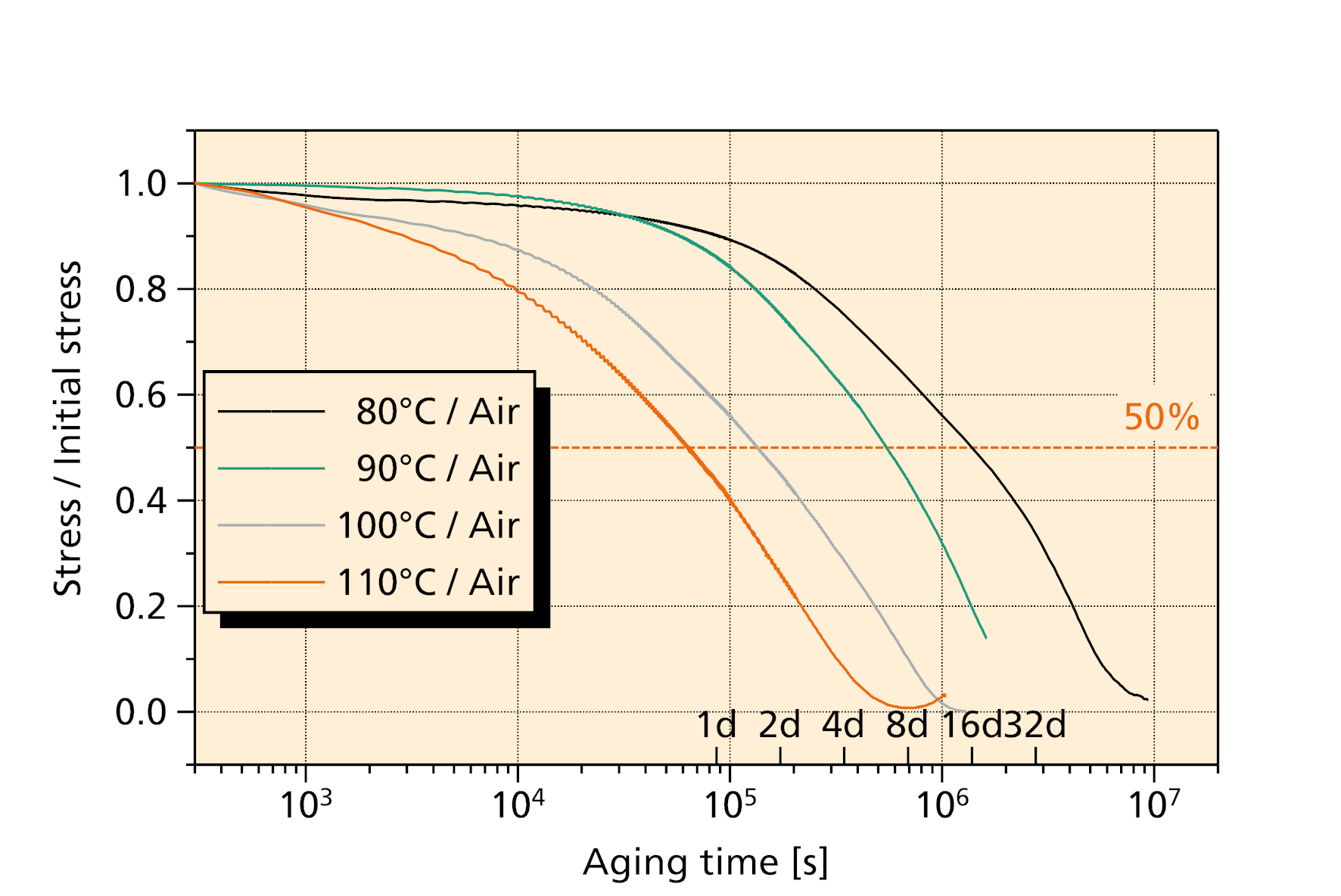Continuous measurements of stress relaxation register the decrease of resetting force in elastomer samples during constant elongation. A decrease in resetting force is associated with a reduced cross-link density caused by thermal degradation.
Stress Relaxation
Measurements of stress relaxation allow a continuous monitoring of aging processes in an elastomer. The sample is stretched by a defined value (typically 10%). This elongation is maintained throughout the entire aging process. The resetting force of the sample is measured. The aging is conducted either under regular air atmosphere or nitrogen atmosphere. The graphs of the resetting force over aging time for different atmospheres are obtained. The resetting force decreases with aging duration because the cross-linked sections are under mechanical stress and are degraded over time and newly created cross-links are built in without stess.
As an example, the lower figure shows the resetting force (standardized on the initial value of the resetting force) over the aging time for different aging temperatures. As expected the aging commences faster, the higher the temperature is. A characteristic aging time can be defined from the graphs, for example, the duration until the force decreased to 50% of its initial value.
The characteristic aging time can be transferred into an Arrhenius diagram over the inverse of the temperature. Conclusions about aging times at lower temperatures (light green area) can be ascertained through extrapolation. These extrapolations have to be taken with caution though, since the aging duration from years up to centuries can have different aging mechanisms.
 Fraunhofer Institute for Structural Durability and System Reliability LBF
Fraunhofer Institute for Structural Durability and System Reliability LBF
